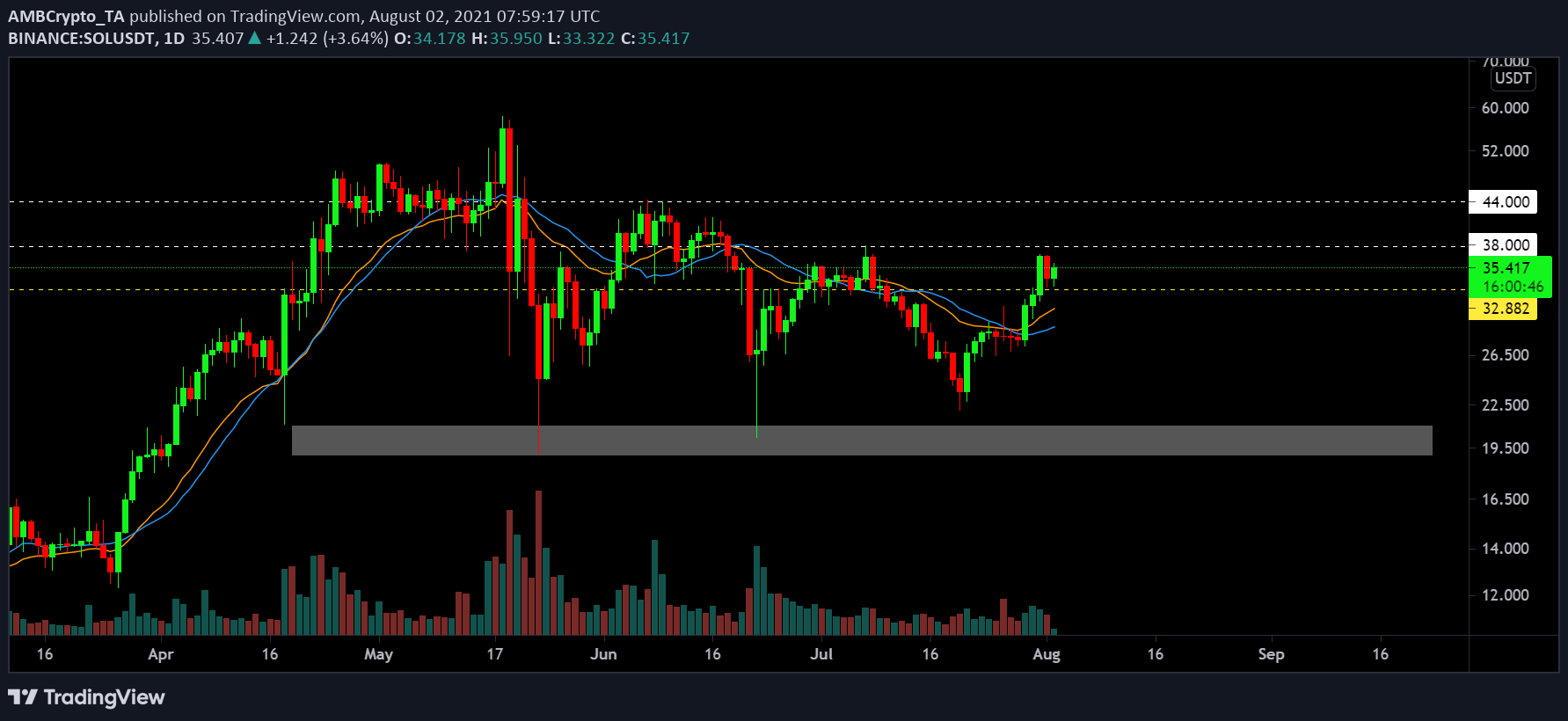Solana needs to tick these boxes before it can match Ethereum’s functionality

Identifying a strong altcoin during a bull rally is a difficult task since most are hiking on the back of strong price performances. It is during a period of consolidation or decline, however, that the true credibility of an asset shines. Especially if the asset is able to navigate selling pressures without losing significant value from its net worth.
Solana has been one of those projects in 2021, with its development taking many in the industry by surprise.
The protocol is decentralized and is currently one of the fastest blockchains out there. In this article, let us analyze its market dexterity and whether it can sustain its long-term progression or not.
Solana Survivor

SOL/USDT on Trading View
Solana is one of the few assets that did not register a lower low value after the initial collapse in the 3rd week of May. While the asset has dropped down to a similar range, it never dropped below 23 May’s low of $19.11. At press time, the asset was close to its immediate resistance, with an eventual breach very likely.
However, the probability of touching its all-time high will only receive a green signal once the asset is above $44. Only then, Solana will have a clean run at it and the token will possibly clock in a new ATH.
Furthermore, Solana isn’t talked about just because of its price performance.
According to explorer.solana.com, the number of transactions per second is currently around 1371, with the total transaction count touching 22.6 million. One of our recent pieces highlighted its on-chain development, with the same pointing out that SOL is the 3rd-largest staked cryptocurrency, only behind Ethereum and Cardano.
Managing Inherent Value and Injecting ‘Serum’
The wider industry is familiar with the fact that Solana’s working functionality is very similar to Ethereum. It differs in terms of structure as it is built as a Non-EVM ecosystem. Ethereum Virtual Machine language is the most popular among developers and over time, other networks such as BSC and Polygon have adopted EVM as well. The growth in liquidity has followed these entities and EVM compatibility with a majority of projects is extremely sound.
Solana is trying to break this monopoly with its Rust programming, but it is still under development. However, Solana’s next bit of development with the DeFi sector might change the dynamics since it already has a central limit order book system like Serum.
Since Serum is based on Solana as a decentralized exchange, it enables composability between applications that are using a common order book. This is a huge advantage as once DeFi applications are open for development on Solana, Serum’s order book will match orders and bids from DEXs. It will also provide significant capital efficiency, enabling better development of financial applications and platforms on Solana.
A lot of ‘Ifs’ remain
At press time, the total value locked on Ethereum was $55 billion. In comparison, Solana held a mere $1 billion. So, there is still a massive gap to bridge in terms of adoption. Right now, Solana definitely needs growth in liquidity pools and developer contribution. Even so, it can be argued that it is on the right track.






